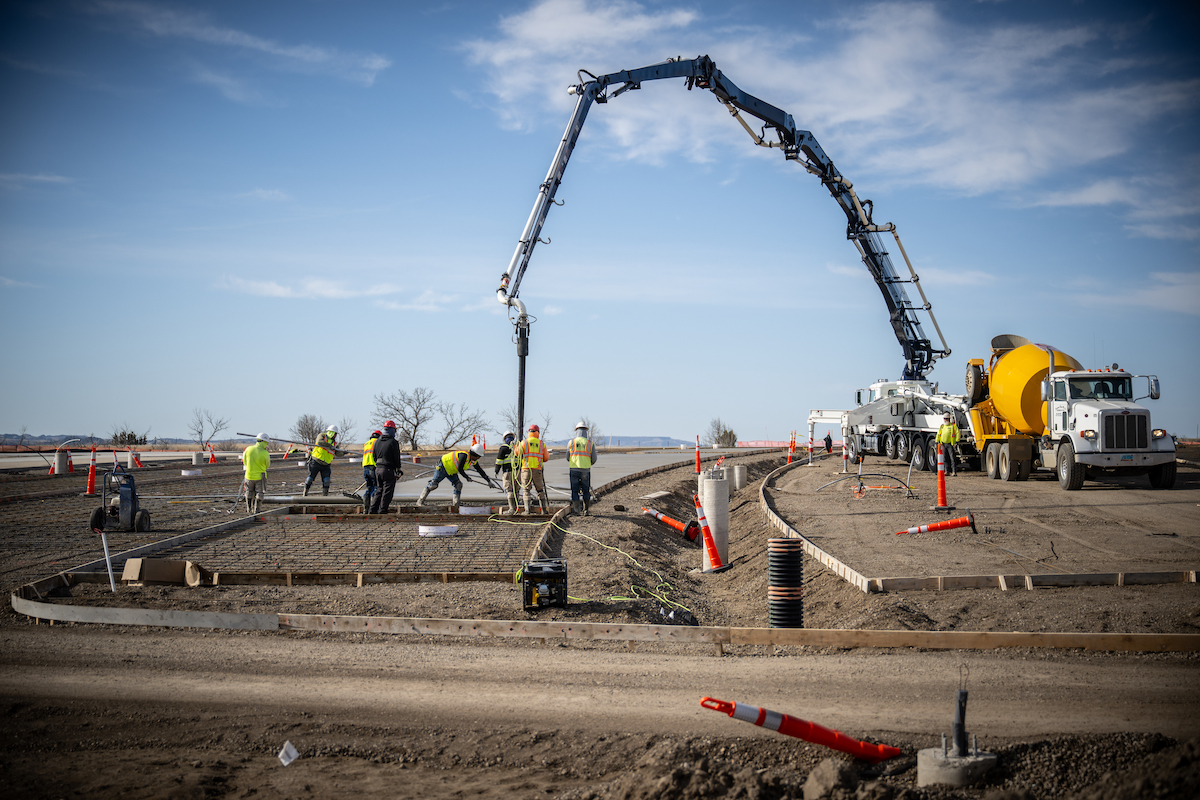MADISON, WI — The Wisconsin Chapter of the American Society of Civil Engineers (ASCE WI) releases the 2024 Report Card for Wisconsin’s Infrastructure, assigning 17 categories of infrastructure a cumulative grade of C+, which is higher than the state’s 2020 grade of C and two notches ahead of the national grade of C- assessed in the 2021 Report Card for America’s Infrastructure. The comprehensive analysis of Wisconsin’s built environment includes the first-ever official statewide assessment on broadband, which earned a C-.
Broadband has been deemed “the fourth utility” due to its increasing importance, following roads, water, and energy. Broadband access, and the electric grid that supports it, remain a significant equity issue for Wisconsin families as society transitions into more online-centered work and schooling environments. To assess these critical systems, the 2024 Report Card for Wisconsin’s Infrastructure features the first official grade for broadband issued in any of ASCE’s state or national Report Cards. Based on available data, Wisconsin has now earned a C- in broadband, similar to energy’s C grade, as both are currently meeting resident needs but need to adapt to rising user demands and increasingly severe weather events that are adding strain to the networks.
“It’s exciting to lead the way on broadband assessments, and we recognize the importance of this new utility in the state of Wisconsin, especially in our rural areas, of connecting people, infrastructure, and commerce in ways they couldn’t be before,” said Ken Mika, ASCE WI Society Director. “Ninety-nine percent of all serviceable locations in the state have some sort of service, which is a great starting point. However, there’s much room for improvement, and we want to highlight the need for funding for maintenance and operations to increase broadband capacity in the state.”
In addition to broadband, the ASCE Report Card for Wisconsin’s Infrastructure provides the only in-depth analysis of the entire state’s critical systems, such as roads and bridges, airports, water systems, and more. Twelve of the 17 categories assessed in the report were rated higher than the national grades. Five categories rose from the 2020 Wisconsin Infrastructure Report Card, including drinking water (C), hazardous waste (B), ports (B-), roads (C), and solid waste (B). Energy (C+) and wastewater (D+) were the only categories to worsen from the 2020 report.
“Having a strong and reliable infrastructure is incredibly important to the success of our state,” Mika said. “This year’s report card underscores the need for continued focus on these key components of our everyday life and provides Wisconsin residents, business leaders, and policymakers with a candid assessment of what we are doing well and where there is room for improvement.”

| Your local Volvo Construction Equipment dealer |
|---|
| Nuss Truck & Equipment |
Also new to this year’s Report Card are assessments of the state’s public parks and schools. Schools had not previously been evaluated in the Infrastructure Report Card and upon investigation, the necessary data to evaluate Wisconsin schools is no longer current enough to formulate a recommendation, earning an I for incomplete. Parks earned a D grade, in part due to the neglect in infrastructure in state and local parks stemming from reductions in government funding at all levels. Contamination from “forever chemicals” or PFAS in drinking water sources has created a challenge regarding water supply and wastewater concerns at WDNR properties, and additional revenue is needed to address such issues.
Wisconsin leads the nation in the number of public drinking water systems, with more than 11,000, 5 percent of which are municipal systems that serve 95 percent of the entire state population. Water quality issues have been driven into the spotlight due to concerns about lead water service lines and contaminants such as bacteria, nitrates, arsenic, and other substances. More than 17 percent of water treated and funded by taxpayers never reaches its destination due to aging and leaking water pipes. Present bipartisan efforts increasing funding, including an additional $600 million from the 2021 Infrastructure Investment and Jobs Act (IIJA), were helpful in improving Wisconsin’s drinking water score to a C, but are not solely sufficient to ensure safe and reliable water supply for future generations. The state currently faces nearly $11.8 billion for water project needs between now and 2040, with available funding expected to fall well short.
Wisconsin’s surface transportation systems received an influx of more than $2 billion from the IIJA, helping cut down on significant investment backlogs for roads and bridges (C+). However, IIJA funding is currently set to expire in 2026, and inflation poses a significant challenge for construction costs and maintenance capabilities. Additional financial investments are not sufficient to significantly elevate the condition of roadway infrastructure. The rate of improvement for the state’s bridge inventory has stalled, and in 2023, 6.3 percent of bridges had a major structural component in poor condition, which is slightly ahead of the national average of 6.5 percent. While improvement is recommended, poor condition ratings do not mean a structure is unsafe, but they require significant maintenance or replacement.
The Report Card for Wisconsin’s Infrastructure was drafted by more than 50 civil engineers across the state.





































































